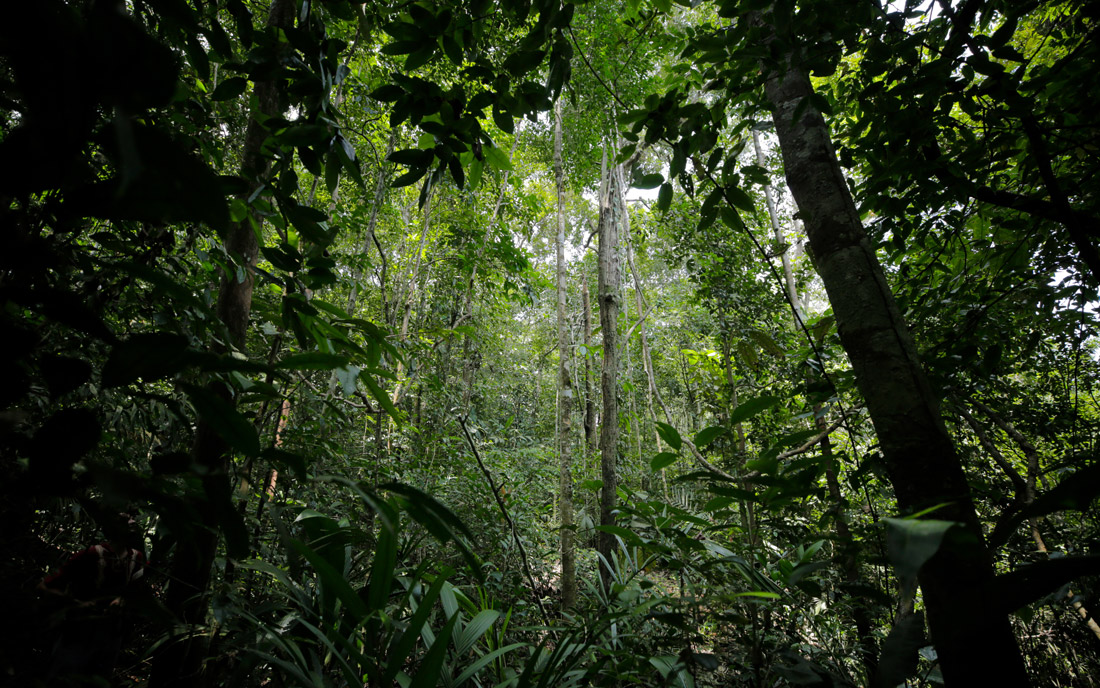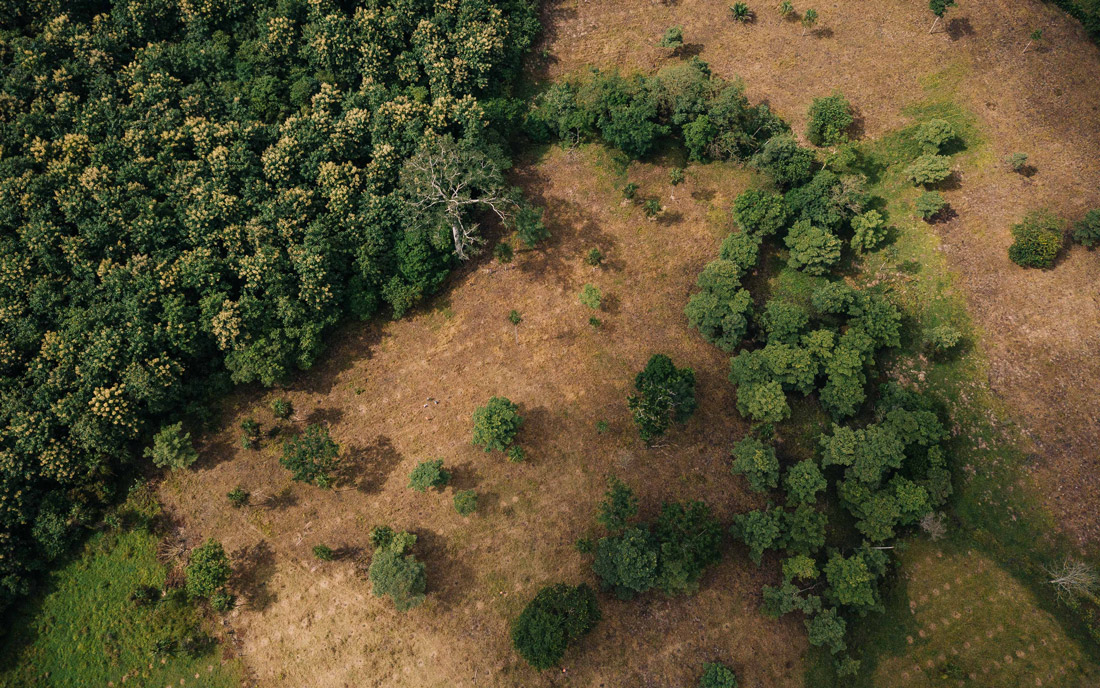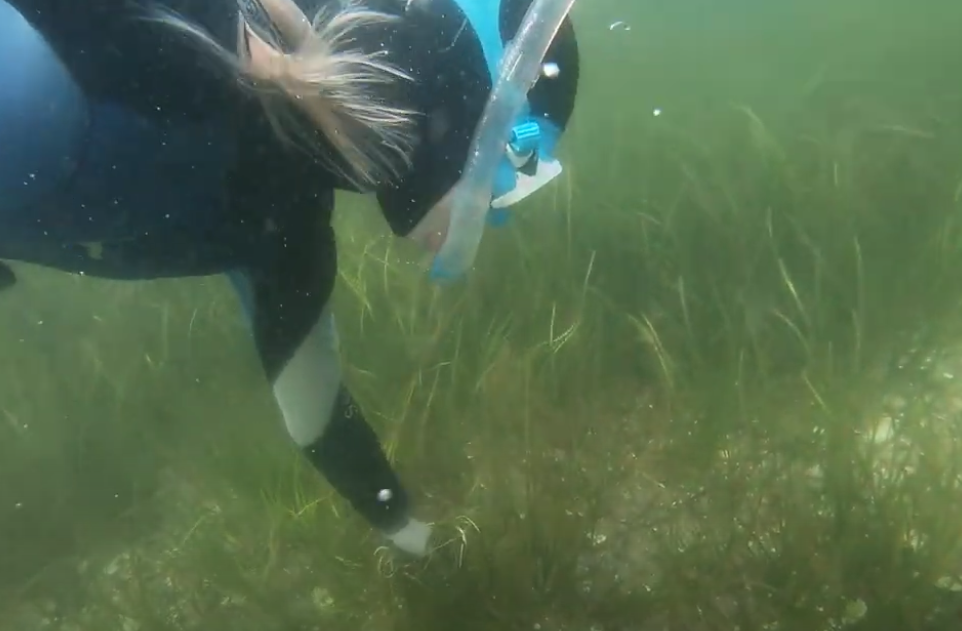Anyone can become part of the solution and build his or her own forest
Wouldn’t it be fantastic if each of us owned a piece of forest, which continuously absorbs CO2 from the atmosphere and thus reduces my carbon footprint? A beautiful forest with native tree species and a diverse fauna. A forest which is managed sustainably and which lasts forever because the sale of wood makes it financially self-sustaining?
This is what the Hamburg-based cooperative The Generation Forest does. it invites all of us to become a member and subsequently to co-own the forests which the cooperative plants with its cooperative capital. A share in the cooperative costs 1,200€ and can be bought through a monthly subscription, starting with 25€.
The idea of a forest cooperative is not new. They have existed in Germany for over 300 years. Still, the model of The Generation Forest Cooperative is unique: First it is open to us all; unlike traditional local forest cooperatives anyone can join in. Second, the cooperative focuses on maximum climate protection. With its powerful forestry approach, it offsets 14 tonnes CO2 per hectare every year. This is more than the average per capita consumption in Germany, which is about 11 tonnes.
The forests are planted where their positive climate impact is greatest
In order to achieve this goal, the cooperative builds its forests where they grow best – in the tropics. Plant growth there is about four times higher than in our temperate zones. Subsequently, the amount of CO2 that is absorbed from the atmosphere and the volume of wood that will later be sold outperforms any German forest.
The initiative benefits from the more than 25 years of expertise in tropical forestry of Iliana Armien and her companion Andreas Eke, who has just been awarded Ashoka Fellow status for his vision of a new – sustainable forestry for the tropics.

After a few years, a generation forest resembles a natural rainforest,
but has a higher density of precious woods.
Towards a paradigm shift in tropical forestry
The Generation Forest Cooperative seeks to transform the tropical forestry sector. Its core: The cooperative adapts the model of sustainable forestry, as we know it from Europe, to the tropics. The cooperative plants mixed forests in which a small number of e.g. 5-6 native tree species dominate. Instead of spruce, oak or beech, they plant tigerwood, pink trumpet tree and rosewood – trees which are native to Panama, one of the world’s core biodiversity hotspots. As the trees grow at different pace, the wood is harvested selectively, whenever a tree is mature. Starting with the first thinning, further trees are planted in the gaps, or grow naturally, as seeds are brought in through the wind or animals. This creates a diverse forest with several layers of trees and a high density of timber which could be sold later on – just like in many European forest
What may sounds logic for us, is revolutionary in the tropics. To date, you find in the tropics either forest company who have a concession to manage a natural forests. Due to the very low density of precious woods (due to the high biodiversity), this is a very inefficient and not very sustainable scheme. Besides, you find multiple plantations where trees are cultivated in a quasi-industrial monoculture scheme. Depending on the tree species – eucalyptus grows faster than teak – plantation are cleared after 15 to 25 years and the investors are paid out. After several cycles the soil is leached out, the land (and its former biodiversity anyway) is basically destroyed.

The cooperative reforests especially
where existing residual forests can be connected.
A social entrepreneurship approach
The cooperative works as a social business that operates for nature and the local people. The forests do not only help to protect biodiversity and regenerate soils and water reservoirs. The long-term management of the forests creates jobs in regions where there are hardly any other income opportunities. These jobs are created under fair conditions, with social security and training opportunities, which is not common in the tropical forest sector.
Many employees are migrant workers belonging to indigenous population groups to whom the Panamanian state has assigned certain reserves. The cooperative trains these employees and supports them in starting reforestation projects in their home communities themselves, e.g. alongside the local rivers.

Die Wälder werden durch die Genossenschaft fortlaufend gepflegt.
In der Mitte: Mitgründern Iliana Armien.
A model which economically makes sense
Despite its social mission, the cooperative follows a clear economic plan. Even though the cooperative works on land that have suffered from previous unsustainable use, the enormous plant growth in the tropics compensates for many of these disadvantages. The cooperative expects a long-term return of 4.5% per year, which is mirrored in the value of each cooperative share. In the end, everyone benefits – the nature, the local people and the members of the cooperative.
Note
Some may know the cooperative under a different name. The Generation Forest Cooperative was founded as a project within the Social Impact Lab in Hamburg under the name “Waldmenschen”. The cooperative changed its name to make its unique generation forest model visible in its name.
How The Generation Forest Cooperative contributes to the 17 Global Goals
Life on Land
Regenerating tropical rainforests, safeguarding biodiversity, fighting soil erosion
Climate Action
Capturing and storing 14tons of CO2 from the atmosphere per year per hectare
Decent Work and Economic Growth
Creating good jobs in rural areas, with educational opportunities and social security
Responsible consumption and production
Turning timber production into a driving force to protect and regenerate tropical forests
Project Assessment
You can access the full project assessment here:
Your Feedback
How do you like the project? Give us feedback!


